Alternative Vehicle Propulsion Systems: The Future of Automotive Tech
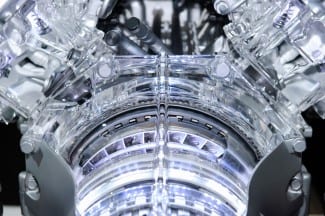
This article is the 3rd of a 3-part series on automotive trends:
- Part 1: Intelligent Mobility
- Part 2: Manufacturing Materials and Processes
- Part 3: Vehicle Propulsion Systems
Since automobiles were introduced, propulsion systems have relied on spark-ignited internal combustion engines (ICEs). These types of gasoline and diesel-based engines have been improved over time, however are likely to become obsolete in the next few decades as new disruptive electric technologies are introduced. This is not only limited to light-duty vehicles; the emergence of Tesla’s “Semi” electric freight trucks set a very clear vision for the future. ICEs will be widely replaced by electric vehicle propulsion systems. But how far into the future will this occur?
Electrification of vehicles is one of the major trends identified in the Center for Automotive Research (CAR) 2017 Technology Roadmaps report. In coming years, there will be a wide range of ICEs, hybrids, and fully electric vehicles on the road as consumers transition into more efficient and environmentally-sensitive propulsion systems. Auto parts manufacturers and assemblers alike must respond to these new trends by investing in electric-based propulsion systems that appeal to the masses.
To ensure that they can remain competitive in this electric-powered future, manufacturers are currently investing in a wide range of propulsion technologies. There must continue to be a mix of ICEs, electrics, hybrids, and other propulsion systems on the market since no clear timeline for an electric-only solution. While this adds pressure on the automotive industry, companies that can cater to a wide range of propulsion needs will be rewarded.
What Vehicle Propulsion Systems Are Most Common?
Internal combustion engines (ICEs) are still leading all other propulsion technologies, but a significant shift towards partial or complete electrification is expected in the next 10 years. Globally it’s expected that five classes of propulsion systems will emerge and provide a much more diverse range of options for consumers.
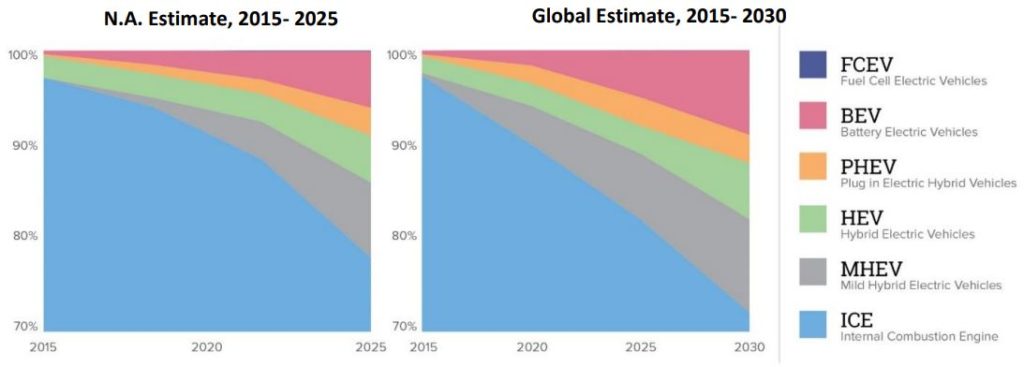
Internal Combustion Engines
ICEs are likely to remain the most cost competitive mass market propulsion system through 2025. Although early-adopters of new electric technologies will continue increasing, the wide availability of ICEs and fueling stations globally will mean that most consumers will choose more efficient combustion engines for their next purchase.
Current (or soon to be released) ICE technologies include:
- Gasoline Direct Injection: Highly pressurized gasoline is injected directly into the combustion chamber of each cylinder, as opposed to the intake tract or cylinder port. This improves efficiency, since conventional injection methods require fuel to be mixed with air and flow around intake valves to be used.
- Turbocharge: Turbocharged engines have a forced induction device to increase the engine’s efficiency and power output by forcing extra air into the combustion chamber.
- Atkinson Cycle: The Atkinson cycle delays the fuel intake valve’s closing until the piston has completed 20-30% of its upward travel on the compression stroke. As a result, some of the fresh charge is driven back into the intake manifold by the rising piston and less fuel is used to create ignition. Despite less fuel, the cylinder’s expansion ratio increases greatly and produces a similar or greater power output.
- Variable Compression Ratio: Since faster driving speeds require lower compression ratios to be efficient (and vice versa), variable compression ratios adjust the compression levels of an internal combustion engine while the engine is in operation.
- Homogenous Charge Compression Ignition: This engine uses a mix of both conventional spark-ignition and diesel compression-ignition technology. To work, small amounts of gasoline are mixed with a large amount of air in the engine’s combustion chambers. Pistons compress this mixture under intense pressure to ignite the fuel without sparking it. This provides the benefit of both gasoline and diesel-based engines – low emissions and fuel efficiency.
- 12 Volt Stop/Start: In ICEs, stop/start systems will switch off the vehicle’s engine when it has slowed to speeds of a few kilometers per hour. While in idle (up to 25% of average travel time), the engine remains off and does not consume fuel or produce emissions. When it’s time to start the vehicle again, the vehicle’s alternator starts the vehicle back up.
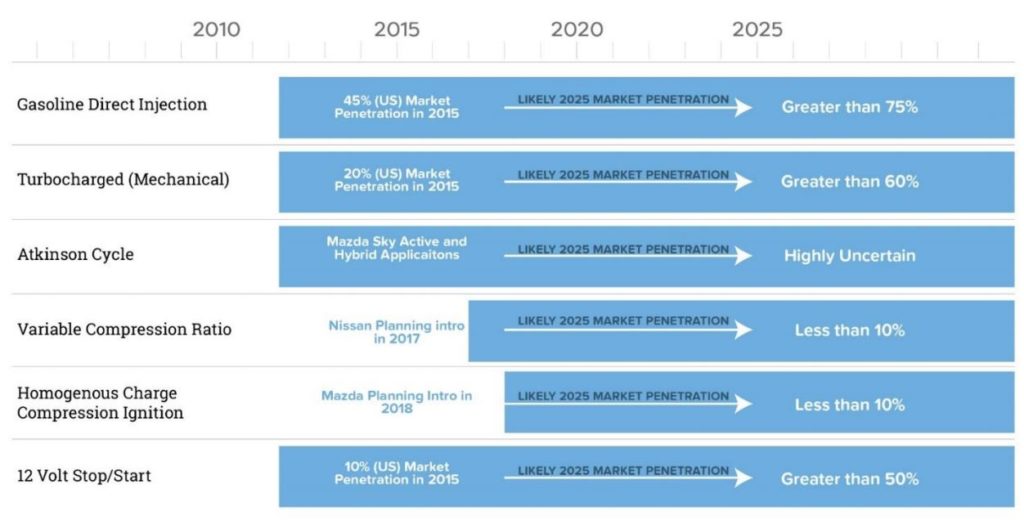
As identified above, the three engine types that should perform the best into the future include gasoline direct injection, turbocharged engines, and 12 volt stop/start systems. Each of these can be ‘stacked’ with other technologies to create incredibly efficient engines that reduce fuel consumption, improve performance, and decrease idle time.
Electric Vehicle Engines
As emissions regulations become more stringent, more battery charging infrastructure is built, and cost competitiveness versus ICEs are improved, global demand for electric vehicles will increase. Even though the timelines for widespread adoption are well into the future, this is an inevitable trend that will continuously shift market demand.
Current (or soon to be released) electric vehicle technologies include:
- 48 Volt Stop/Start Mild Hybrid: Since electric vehicles will continue integrating new electrical components, a 48-volt battery will be needed in the future. Stop/start functionality would mean that upon slowing down, regenerative braking systems could shut off and recharge the battery, then restart it when the vehicle accelerates again.
- Hybrid Electric Vehicle (HEV) Power Split: Power split hybrids contain both an internal combustion engine and an electric engine which can be used to power the vehicle. At faster speeds, the ICE is dominant while at slower speeds the electric engine is dominant. As the ICE is used, it recharges the electric engine.
- Plug-in Electric Vehicle (PEV): Plug-in EVs do not have hybrid capabilities and therefore cannot be recharged through the running of an ICE. As such, batteries must be recharged through connection to the electrical grid.
- Battery Electric Vehicle (BEV): Battery electric vehicles are similar to plug-in electric vehicles, however some have the option of interchanging battery packs for extra range. As opposed to PEVs, battery systems are accessible and can be changed in/out relatively easily.
- Fuel Cell Electric Vehicle (FCEV): Fuel cells use oxygen from the air and compressed hydrogen from a fuel tank to produce electricity within the vehicle. This electricity can then be used to support driving functions.
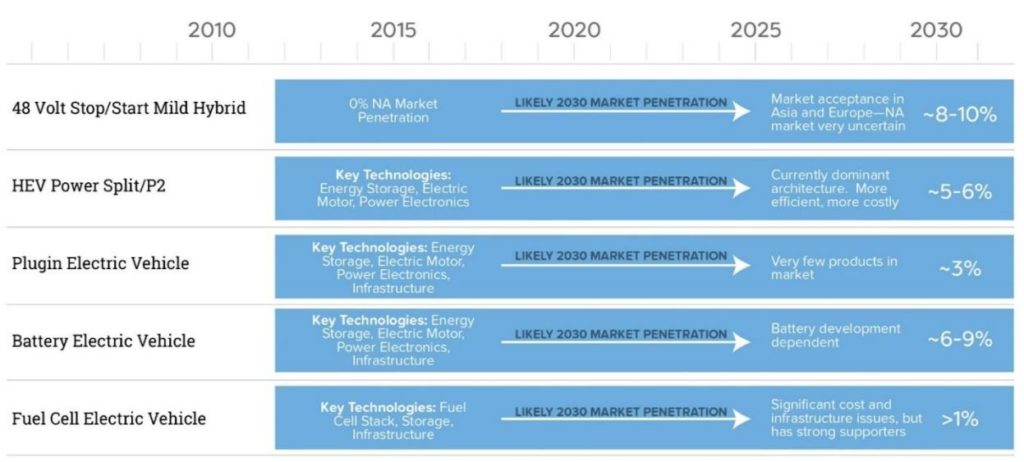
By the year 2030, its expected that the top three most prevalent electric vehicle types will be the 48 volt stop start system (~8-10%), battery electric vehicles (~6-9%), and hybrid-electric vehicle power splits (~5-6%). As fuel cell electric vehicles require hydrogen refueling, it’s expected that this technology will have difficulty reaching mass market appeal.
How will Electric Vehicle Propulsion Systems Evolve?
As emission regulations tighten and consumers look for more efficient mobility systems, electric vehicles will reach widespread market adoption. But when will this occur? The shift towards electrification will be slow but undeniable. By 2030, upwards of 30% of new vehicles will be powered on electricity and will continue to grow thereafter.
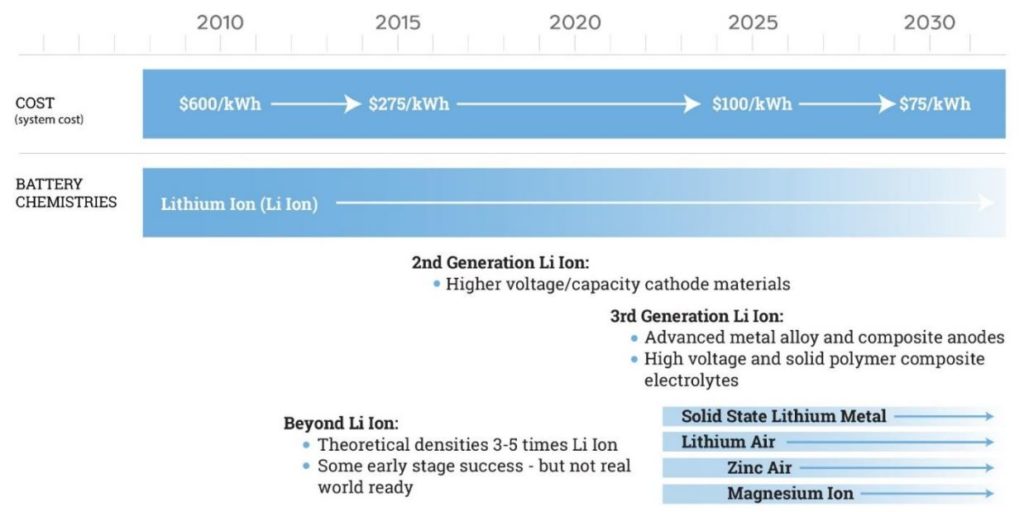
Ultimately, adoption of electric vehicles will come down to consumers being comfortable with the cost and range of batteries. When EV batteries were first introduced, the costs per kWh were roughly $600. In about five years the technology improved to a point where the cost was cut nearly in half, and will continue to fall as new generations of lithium-ion batteries are introduced.

